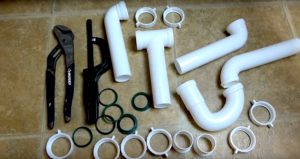
From a Contractor’s Perspective: 18 Overlooked Ways to Save Money When Building Your House Part II
This is the final part of a two-part article that shares 18 overlooked ways contractors save big when building a house. We previously gave you eight tips for lowering your construction costs here. If you haven’t had a chance to review those secrets yet, be sure to check them out. 
Here are the final nine.
- Ask for discounts. Let us be clear: contractors need to turn a profit in order to remain in business and continue offering their service to you and other homeowners. Their expenses are high when calculating overhead, labor, insurances, risk/liability, licenses, and material.
Often their price includes a contingency budget, anywhere from 5-10% (referred to as CYA in the business). And then some will inflate their numbers if they are concerned you will be a difficult client; this is not unreasonable either when considering the more time, changes, and “handholding” is required, the more this costs them. Sometimes not using the contingency budget can mean a savings for you.
We are not advocating beating up contractors over price. Instead, treat them with respect.
However, that doesn’t mean you can’t ask for a discount. Every little bit helps, even if it’s a $100 savings, or $500 discount, or $2000 reduction. This all adds up to money back in your pocket.
 Sometimes the savings is a result of the contractor having leftover material from a previous job, such as siding, that they could use on your house, which saves him and you in material expense. Remember, just because he didn’t tell you he has it, doesn’t mean he doesn’t have some material that could work. Most do, in fact. After all, he may have the understanding that you are unmoving on a particular feature when in fact you are open to considering an alternative as long as it fits within your parameters.
Sometimes the savings is a result of the contractor having leftover material from a previous job, such as siding, that they could use on your house, which saves him and you in material expense. Remember, just because he didn’t tell you he has it, doesn’t mean he doesn’t have some material that could work. Most do, in fact. After all, he may have the understanding that you are unmoving on a particular feature when in fact you are open to considering an alternative as long as it fits within your parameters.
Over the years of asking for discounts, we have about a 65% success rate. Just by asking a simple question. No harm done when the 35% can’t provide one.
You could argue that by us doing so it encourages subcontractors to inflate their numbers by expecting you will request a discount. Maybe. Maybe not. But if they do anyway and you are not asking, then you just gave away that money anyway.
And in an effort of full disclosure, we have only had one subcontractor get offended that we asked for a discount on what we KNEW was an inflated number. (We knew this because we provided the same service but our equipment was down and he saw an “opportunity.”) He began to act like a bully after we asked for a discount, so we dropped him. Turns out we avoided a big problem using him by asking him upfront.
- Request a Firm Fixed Price. A firm fixed price (FFP) is just that – the contractor gives you a firm price that is all-inclusive. This avoids the dreaded “hidden fees” and unpleasant surprises some companies are known for.
 Some companies are unwilling to provide an FFP, which is often a method we use to weed out unprofessional companies. Preparing an FFP takes time and ensures that they have reviewed your plans and scope thoroughly.
Some companies are unwilling to provide an FFP, which is often a method we use to weed out unprofessional companies. Preparing an FFP takes time and ensures that they have reviewed your plans and scope thoroughly.
You can still negotiate on the FFP, but once you have agreed upon it then the negotiations are over and you cannot ask for a reduction in cost and he cannot request an increase in price.
A firm fixed price does not include unforeseen conditions, however, so be sure you talk to your contractor upfront about what some of those may be. Unforeseen conditions are more of an issue in the renovation and remodeling industry, though they occur in new construction as well. And it is often impossible for contractors to offer an FFP in remodel projects.
One last thing to keep in mind about the FFP method is that the contractor carries the risk. If they bid the job correctly, they stand to make more money than working an hourly rate or cost plus scenario. However, they could also lose money if they missed something in their bid. What this means is that by going with an FFP approach, you are not entitled to ask for a percentage of the money back, such as a savings in their contingency fund if they did not dip into it.
For our projects, we require a firm fixed price on the majority of the work we do since the pros outweigh the cons.
- Avoid Paying Before Services Are Rendered. This tip relates more to avoiding cost overruns than saving money, though they are related and worth considering. This should also be common sense – don’t pay your subcontractors until they have performed a service and/or purchased material. Better yet, offer to buy the material for them if they need the money up front.
The problem is too many contractors never return to complete the job when there is no incentive left for them to return. As the saying goes, it’s better to keep people honest than placing them in a position where they may not feel obligated to finish the work. It has been our sad experience that nearly every time you pay upfront, you are burned.
In addition, our policy is to be cautious around companies that aren’t solvent enough to cover their own material costs upfront. This doesn’t mean don’t use them, but it should be a red flag that they have a lot of demands and stress that may impact your project.
- Consider Other Professionals than Family and Friends. We have all used family and friends in the business. Some are great, most will end up costing you more in the long-run. Owning a home is most people’s greatest investment; don’t risk it on someone who may not be as knowledgeable and fast as the professional.
- Time of Year. An often overlooked secret to saving money on construction costs is the time of year you are building. In colder climates, early spring is usually the cheapest time to build followed by late autumn. Summer is usually the most expensive.

The reason is simple. Construction slows down when it is cold, which means more companies are hungry for work and are willing to bid lower amounts just to keep the cash flowing and their skilled employees working. Then once the busy season hits, contractors can afford to “pick and choose” which jobs they want since there is often such a glut of projects, which increases the price.
We sometimes see a push at the end of the year when new homeowners are anxious to get into their houses before the holidays. If you are flexible on the timeframe of your house, you can often realize big savings. Not every contractor will lower their rates, but many will.
- Buy from Wholesalers Instead of Retail. There are areas where you can, and should, buy directly from the wholesaler and/or manufacture instead of retail. One of our favorites is ETO Doors. They sell high-end doors at very reasonable rates. A complete door package through this company can save thousands of dollars for comparable doors bought at a box store.
- Bid out the Jobs. It’s standard practice to solicit at least three bids for each division of construction. If you aren’t doing this, then you are likely giving up on savings . . . even if you’ve known your contractor for years. Let your subcontractors know upfront you are doing this to encourage them to be competitive in their pricing. The savings can be immense, often to the tune of tens of thousands of dollars.
A recent example illustrates this point. Our company was working on a large industrial project. The scope was complex due to the height of the structure and obstructions around the job site. We solicited bids for spray foam and received four. The highest bid was for $260,000 and the lowest was for $45,000. Since another bid came in close to the low number and we discussed the project in depth with the company, we knew their number was solid. The last number was double the low bid.
The point is, had we only received bids from two companies that were on the upper end, we would not have accepted the high bid but we may have accepted the one for $90,000 and in the process thrown away tens of thousands of dollars. The idea is the same for home builders in Spokane, and Coeur d’Alene, and virtually anywhere.
- Do Your Own Painting. If you watch the home decorating channel, you will see people painting their rooms themselves. The reason is because painting is one of the easiest ways to add sweat equity to your house.
 We hire painters to do complex styles and/or ceilings that are difficult to reach. Otherwise, we do the rest of the painting ourselves and save a couple thousand bucks.
We hire painters to do complex styles and/or ceilings that are difficult to reach. Otherwise, we do the rest of the painting ourselves and save a couple thousand bucks. - The Cheapest Isn’t Always the Cheapest. Okay, this tip is borderline fluff, but we felt it was worth including for the simple fact that there is a lot of garbage out there in terms of materials and service. You can, and will, lose money over time when only finding the lowest number. In some areas, it is worth hiring the contractor who charges a little more (as long as it isn’t substantially more) and go with material that will hold up longer.
So there you have it. These are 18 insider secrets we use all the time to bring the costs down on our projects.
You can too.
Together, with the 40% savings potential we discussed here, it is possible you could reduce the cost of your new home by as much as 50% or more. And even if you can only bring down the cost by half that amount, that is still nearly $100,000 in savings on the average new home in America.


 Previous Post
Previous Post Next Post
Next Post


